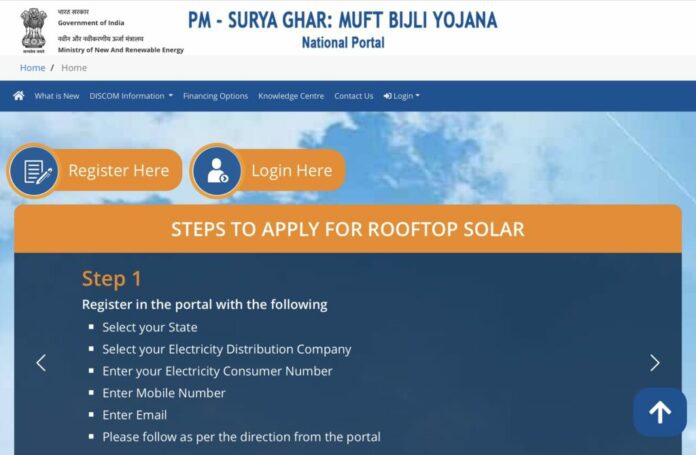The Solar Rooftop Scheme 2024, initiated by the Ministry of New and Renewable Energy, marks a significant step towards promoting clean energy adoption in India. By incentivizing the installation of solar panel systems on rooftops, the government aims to revolutionize the nation’s energy landscape and combat climate change. This article delves deeper into the various aspects of the scheme, including its objectives, application process, benefits, eligibility criteria, subsidy structure, and the role of the solar rooftop calculator.
Harnessing solar energy through rooftop installations is a game-changer. It empowers individuals and communities to become active participants in the renewable energy revolution. The scheme incentivizes citizens to adopt solar power by providing subsidies and financial assistance. By tapping into the abundant solar potential, India can reduce its carbon footprint significantly.
The Solar Rooftop Scheme 2024 presents a win-win situation for both the environment and consumers. Not only does it promote clean energy generation, but it also leads to substantial savings on electricity bills. Additionally, surplus energy generated can be fed back into the grid, further enhancing the sustainability quotient.
The rollout of the Solar Rooftop Scheme 2024 is a significant milestone in India’s quest for energy independence. It underscores the government’s commitment to transitioning towards cleaner and greener alternatives. With solar power becoming increasingly affordable and accessible, every rooftop has the potential to become a mini power plant.
Moreover, the Solar Rooftop Scheme 2024 aligns with the global shift towards renewable energy adoption. Nations worldwide are recognizing the importance of transitioning away from fossil fuels. India, with its vast solar potential, is poised to lead the charge in this renewable revolution.
Table of Contents
Understanding the Solar Rooftop Scheme
The primary objective of the Solar Rooftop Scheme 2024 is to harness solar energy for electricity generation by installing solar panels on rooftops. This decentralized approach not only reduces dependence on conventional power sources but also contributes to environmental sustainability. By leveraging solar power, households, institutions, and businesses can significantly lower their carbon footprint and contribute to India’s renewable energy targets.
World’s Cancer Capital India- A Comprehensive Analysis
Application Process Simplified
Applying for the Solar Rooftop Scheme 2024 is a straightforward process facilitated through the official government portal. Prospective beneficiaries can register on the PM Surya Ghar Portal, select their state and electricity distribution company, and provide necessary details such as electricity consumer number and contact information. Once the application is submitted, applicants await approval from the distribution company before proceeding with the installation of solar panels.
Required Documentation
To complete the application process, individuals need to furnish specific documents, including a photograph of the beneficiary, a scanned copy of the Aadhar card, a bank passbook, the latest electricity bill, site photographs post-installation, and the net meter installation certificate issued by the distribution company. These documents help verify the eligibility of applicants and ensure the smooth implementation of the scheme.
Benefits to Homeowners
Participating homeowners stand to gain significant advantages from the Solar Rooftop Scheme 2024. In addition to accessing free electricity up to a certain limit each month, they can expect substantial annual savings ranging from ₹15,000 to ₹18,000. By embracing solar power, homeowners not only reduce their electricity bills but also contribute to India’s sustainable development goals and environmental conservation efforts.
Eligibility Criteria Demystified
The Solar Rooftop Scheme 2024 has specific eligibility criteria that applicants must meet to qualify for subsidies. Individuals applying for the scheme should be Indian citizens aged 18 years or above and own residential properties suitable for solar panel installation. Meeting these criteria enables applicants to avail themselves of the financial assistance provided by the government and embark on their journey towards sustainable energy adoption.
Understanding Subsidy Structure
The subsidy structure of the Solar Rooftop Scheme 2024 is based on the capacity of the solar panel system installed. For instance, households opting for a 1 kW solar panel system can receive up to ₹18,000 in subsidies, while those installing larger systems can avail of higher subsidies. This financial support aims to make solar power more accessible and affordable for households across India, thereby accelerating the transition to renewable energy.
Utilizing the Solar Rooftop Scheme Calculator
Prospective beneficiaries can leverage the online calculator available on the official website to estimate the subsidies they are eligible for under the Solar Rooftop Scheme 2024. By inputting relevant details such as the capacity of the solar panel system and their location, individuals can gain insights into the financial benefits of adopting solar power. The calculator serves as a useful tool for making informed decisions regarding solar panel installations.
Earthquake in Japan and Taiwan: Devastation, Survival, and Hope
Conclusion
In conclusion, the Solar Rooftop Scheme 2024 represents a transformative initiative aimed at promoting clean and sustainable energy adoption in India. By encouraging the installation of solar panels on rooftops, the government empowers citizens to become active participants in the country’s energy transition. With accessible subsidies, streamlined application processes, and the support of the solar rooftop calculator, every Indian household can contribute to building a greener and more sustainable future.















